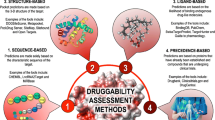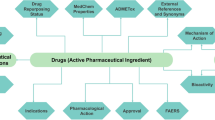Abstract
Target-oriented drug discovery is the main research paradigm of contemporary drug discovery. In target-oriented approaches, we attempt to maximize in vitro drug potency by finding the optimal fit to the target. This can result in a higher molecular complexity, in particular, the higher molecular weight (MW) of the drugs. However, a comparison of the successful developments of pharmaceuticals with the general trends that can be observed in medicinal chemistry resulted in the conclusion that the so-called molecular obesity is an important reason for the attrition rate of drugs. When analyzing the list of top 100 drug bestsellers versus all of the FDA approvals, we discovered that on average lower-complexity (MW, ADMET score) drugs are winners of the top 100 list in terms of numbers but that, especially, up to some optimal MW value, a higher molecular complexity can pay off with higher incomes. This indicates that slim drugs are doing better but that fat drugs are bigger fishes to catch.





Similar content being viewed by others
References
Scannell JW, Blanckley A, Boldon H, Warrington B (2012) Diagnosing the decline in pharmaceutical R&D efficiency. Nat Rev Drug Discov 11:191–200. doi:10.1038/nrd3681
Lindborg SR, Persinger CC, Sashegyi A, Mallinckrodt C, Ruberg SJ (2014) Statistical refocusing in the design of Phase II trials offers promise of increased R&D productivity. Nat Rev Drug Discov 13:638–640. doi:10.1038/nrd3681-c1
Pammolli F, Magazzini L, Riccaboni M (2011) The productivity crisis in pharmaceutical R&D. Nat Rev Drug Discov 10:428–438. doi:10.1038/nrd3405
Lendrem D, Senn SJ, Lendrem BC, Isaacs JD (2015) R&D productivity rides again? Pharm Stat 14:1–3. doi:10.1002/pst.1653
Polanski J, Bogocz J, Tkocz A (2015) Top 100 bestselling drugs represent an arena struggling for new FDA approvals: drug age as an efficiency indicator. Drug Discov Today 20:1300–1304. doi:10.1016/j.drudis.2015.06.015
Swinney DC, Anthony J (2011) How were new medicines discovered? Nat Rev Drug Discov 10:507–519. doi:10.1038/nrd3480
Walters WP, Green J, Weiss JR, Murcko MA (2011) What do medicinal chemists actually make? a 50-year retrospective. J Med Chem 54:6405–6416. doi:10.1021/jm200504p
Hann MM, Keseru GM (2012) Finding the sweet spot: the role of nature and nurture in medicinal chemistry. Nat Rev Drug Discov 11:355–365. doi:10.1038/nrd3701
Hann MM (2011) Molecular obesity, potency and other addictions in drug discovery. Medchemcomm 2:349–355. doi:10.1039/c1md00017a
Lipinski C, Hopkins A (2004) Navigating chemical space for biology and medicine. Nature 432:855–861. doi:10.1038/nature03193
Gleeson MP, Hersey A, Montanari D, Overington J (2011) Probing the links between in vitro potency, ADMET and physicochemical parameters. Nat Rev Drug Discov 10:197–208. doi:10.1038/nrd3367
Ferenczy GG, Keserű GM (2013) How are fragments optimized? a retrospective analysis of 145 fragment optimizations. J Med Chem 56:2478–2486. doi:10.1021/jm301851v
Leeson PD, Springthorpe B (2007) The influence of drug-like concepts on decision-making in medicinal chemistry. Nat Rev Drug Discov 6:881–890. doi:10.1038/nrd2445
Kenny PW, Montanari CA (2013) Inflation of correlation in the pursuit of drug-likeness. J Comput Aided Mol Des 27:1–13. doi:10.1007/s10822-012-9631-5
Kalliokoski T, Kramer C, Vulpetti A, Gedeck P (2013) Comparability of mixed IC50 data: a statistical analysis. PLoS One 8(4):e61007. doi:10.1371/journal.pone.0061007
Zartler ER, Shapiro MJ (2005) Fragonomics: fragment-based drug discovery. Curr Opin Chem Biol 9:366–370. doi:10.1016/j.cbpa.2005.05.002
Acknowledgments
Anonymous reviewers were kindly acknowledged for a valuable remarks allowing for a substantial improvement of the original text. JP kindly thank the financial support of NCBR Grants ORGANOMET No: PBS2/A5/40/2014 and TANGO1/266384/NCBR/2015.
Author information
Authors and Affiliations
Corresponding author
Electronic supplementary material
Below is the link to the electronic supplementary material.
Rights and permissions
About this article
Cite this article
Polanski, J., Bogocz, J. & Tkocz, A. The analysis of the market success of FDA approvals by probing top 100 bestselling drugs. J Comput Aided Mol Des 30, 381–389 (2016). https://doi.org/10.1007/s10822-016-9912-5
Received:
Accepted:
Published:
Issue Date:
DOI: https://doi.org/10.1007/s10822-016-9912-5




